Chesapeake Bay, Virginia & Maryland
10 - 16th July 2004
After motoring past the manoeuvring warships at Norfolk's naval bases, we made our way out into the Chesapeake Bay. Our first port of call was Cape Charles, on the Eastern Shore of Virginia, to visit new friends Ralph and Jeanette.
Space was quite limited in Cape Charles' harbour, so after we'd deployed a stern anchor, to stop Anju swinging and blocking the marina entrance, Ralph came to the harbour to pick us up. As Vice President of the Chamber of Commerce, Ralph knew everyone in town and gave us a tour of all the town's sights, his own yacht and home.
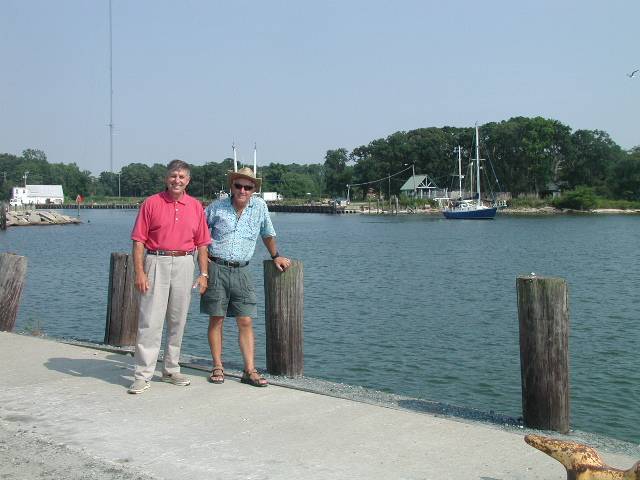
Touring Cape Charles with Ralph.
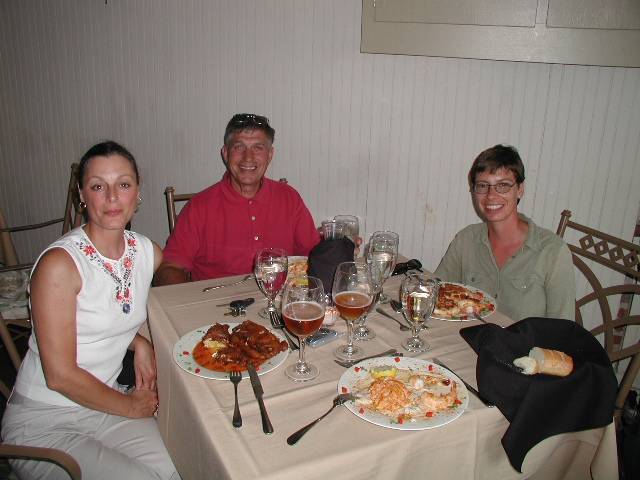
Dining in Style with Ralph and Jeanette at "The Chesapeake"
Later Ralph and Jeanette really spoiled us by treating us to a wonderful meal in a local restaurant, The Chesapeake, where we sampled delicacies of the Chesapeake, including crab cakes, flounder and soft shell crabs and we met the owner Robin. For dessert we moved along the main street to a beautifully decorated coffee shop for cakes. It was a wonder that our dinghy made it back to Anju after all the indulgence!
We were to be spoiled more next day, when Jeanette kindly allowed us to use her washing machine, drove us to the supermarket and invited us to a barbecue with her parents, Gus and Dorothy!
We had to leave Cape Charles before we got too accustomed to the luxury, so set off at first light next day for Deltaville, on the western shore of the Chesapeake. We'd adopted a strategy of leaving as soon as it was light enough, to ensure we were anchored soon after lunchtime, before the storms normally began. In Deltaville we were glad our bikes were still with us, as the pretty town was strung along a road about three miles long and we managed to take a quick tour before the bad weather started.
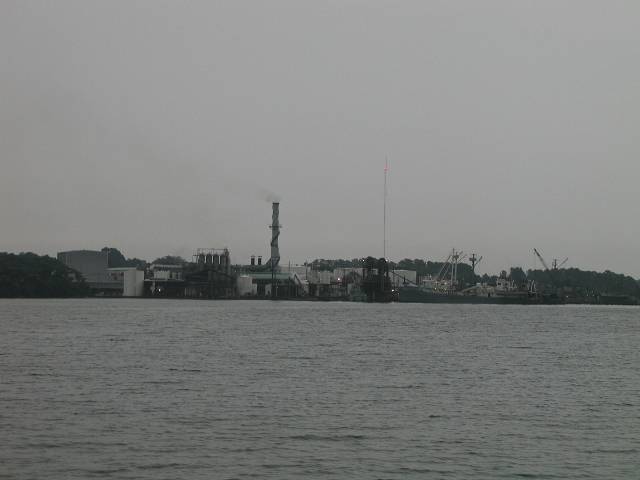
Phew what a stink! Manhaden Processing Plant.
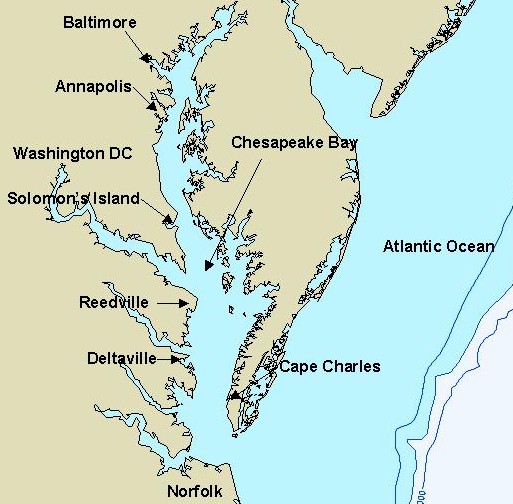
Next day we headed further north to Solomons Island and found that despite the weather forecast, we had the wind against us, so ended up motoring there. On our way we passed a lighthouse called Point No Point and debated whether it was so-called because there was no point or headland where it stood or because the builders thought there was no point building it. In any case we weren't close enough to see for ourselves.
The following day in Solomons, we went to see the Calvert Marine Museum. First we watched otters playing in their enclosure and then visited the old Drum Point Lighthouse, which was relocated in one piece to the museum in the 70s and renovated to look as it did originally. We decided it would be a good place for us to live, as we're used to living alone in a small space, surrounded by water! By the end of its working life, you were able to walk right out to the lighthouse but when it was first built it was out at sea. One of the lighthouse keepers was stranded there when the steps and lower deck washed away in a winter storm, his only way to get ashore was to swim!
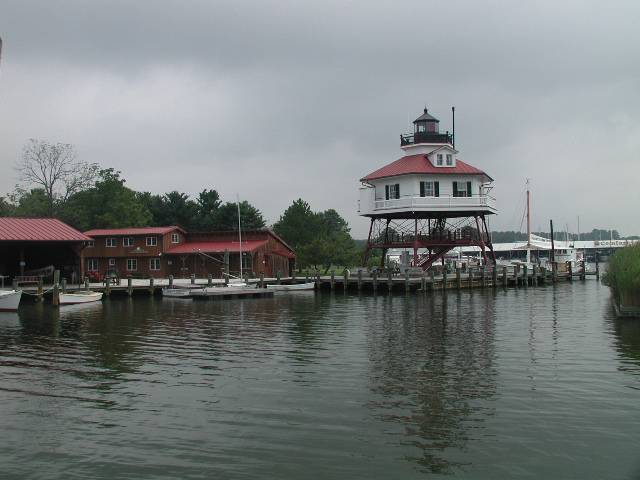
Solomons Calvert Marine Museum with the old Drum Point Lighthouse.
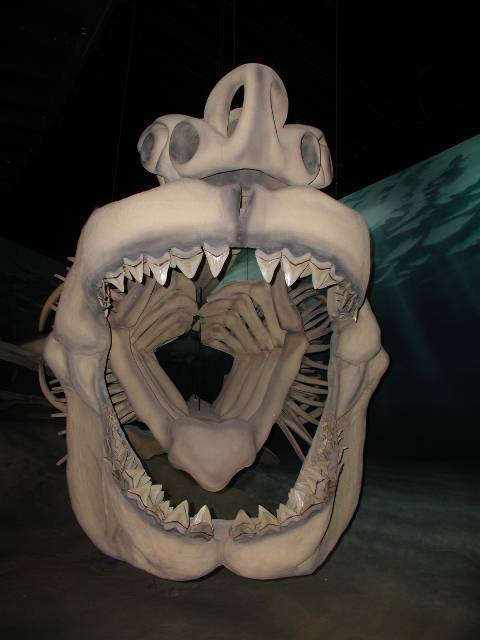
Megatooth or what?!
We visited the Oyster House, which had interesting information on the different fishing methods used in the area and how the Oysters were prepared and canned for shipping to the cities where demand was high in the 30s. It was interesting to learn how fish stocks in the Chesapeake were depleted by over-fishing and pollution.
We called in the fishing shop, we are never allowed to walk past one! Ryan there showed us local crabs in both the soft shell stage, when they have shed their shell and are entirely floppy for a couple of hours until the new one starts to harden and also "peelers" which are ones due to shed soon.
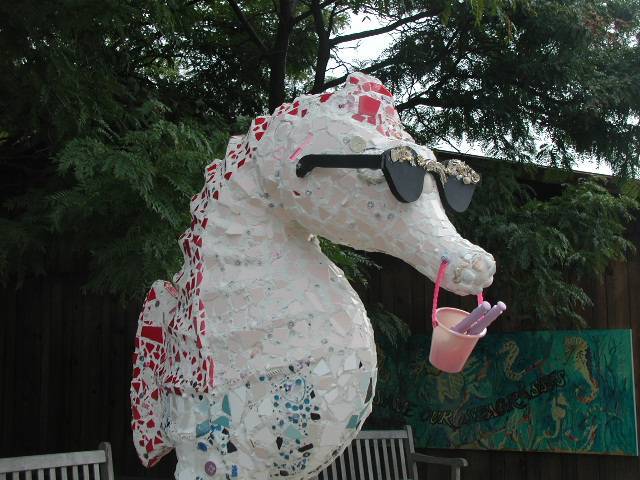
Now we know where seahorses go for their holidays!
As we approached Annapolis the sea got thick with sailing boats of all types and sizes - it was crazy. We wove our way between them and decided to anchor off the wall of the Naval Academy, close to the town centre. The anchorage was rolly mostly due to the passing boat traffic. As soon as we arrived we called our friends Woody and Janine. We met them in Martinique last year when they were cruising on their well-named vessel "Boat". They live nearby in Crownsville. Woody picked us up straight away and whisked away to dinner at their house, which was about a 20 minute drive away. It was great to see them again and they fed us the most enormous steaks.
Back on Anju, when we were awakened next morning at 6 am by the " Plebes" or trainees at the Academy doing their early morning exercises in a very noisy manner, we were glad we'd decided to move the boat to a creek up the Severn River, Valentine Creek, which was near Woody and Janine's house.
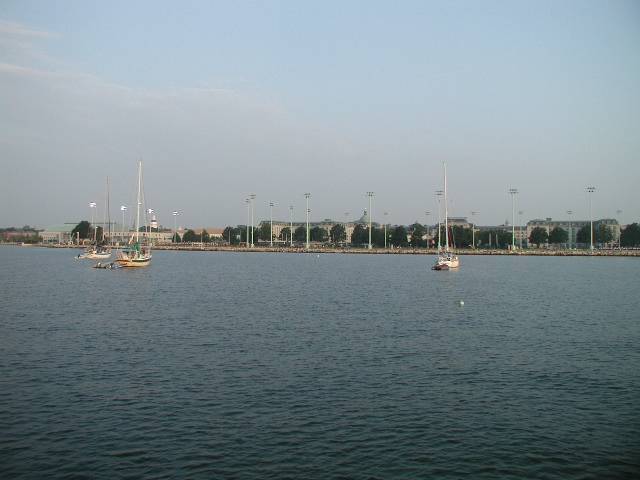
Anchored off Annapolis' Naval Academy.
Woody took the six mile trip up the river with us. Valentine Creek was very pretty, with many boats on mooring buoys but we managed to find a spot to anchor near the entrance. Woody was highly entertained by our normal debate about where to drop the anchor!. We found a spot at the bottom of their street where we could leave the dinghy. We'd planned to stay in Herald Harbor, as the area is known, for a few days but Anju was to become a fixture in Valentine Creek for almost three months in the end!